Hi All who didn’t know that the magazine wanted to create a new blog presence on the main website (there’s a BLOGS tab at the top of the main screen).If you’ve been wondering whether I’d moved on to bluer sky pastures, nope, just changed my blog landing strip. You can find the blog page by going here also.See you there!
Pipistrel’s New Alpha Trainer Announced
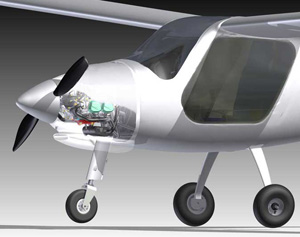
An 80-hp Rotax 912 engine brings strong climb and 108-knot cruise.

A big part of Pipistrel's success: sleek, efficient aerodynamics. All images courtesy Pipistrel



The company I’ve been writing a lot about lately keeps finding more things for me to talk about. When I was in Slovenia last month, Pipistrel‘s movers and shakers told me on the QT to be ready for a major announcement soon. *** And here it is: just officially announced this morning, introducing the Alpha Trainer, a purpose-built version of the company’s winning Virus SW (Short Wing) cruiser. Designed for the flight school market, it carries an introductory price that should raise a few eyebrows: $83,000 just about everything, including delivery, shipping to the US, FAA fees etc. *** Yep, I’d call that news. *** Rand Vollmer of SALSA Aviation, a U.S. Pipistrel dealer, tipped me off this morning about the official release. Pipistrel makes elegant, fun-flying, functional aircraft and the Alpha (200 were recently ordered by the Indian government) should prove to be no exception.
Pipistrel Comes Through Again
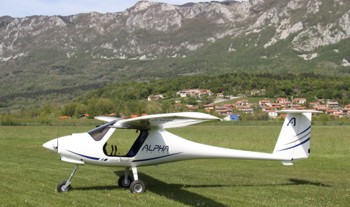
Pipistrel's ALPHA Trainer. all photos courtesy Pipistrel

Beefed up gear, lower nose angle, shorter prop to minimize prop strikes.

Three-point belts, headrest, durable fabric upholstery.

Flaperon handle actuates 25° of travel

High-leverage center console handle for hydraulic brakes

Just a few short months ago I posted an announcement from Pipistrel about its upcoming, mid-$80K ALPHA Trainer, targeted for flight schools and already bought in significant quantities by the Indian Air Force as a military primary trainer. *** ALPHA was promised for April, and Pipistrel nailed it – how often do we see that in manufacturing?Pipistrel is the same progressive Slovenian company that won the CAFE electric flight competition last year with the Taurus Electro G4 and has gained a growing reputation in the sport aviation industry for innovative, high-performing, highly efficient aircraft such as the Virus and Sinus S-LSA.After keeping its promise to debut the ALPHA in April at the European AERO show, word comes from Ivo Boscarol and company of the successful conclusion of flight testing. The ALPHA is now in production. *** The original concept was to create a do-it-all trainer that would garner substantial orders, enabling mass production economies of scale that would keep costs affordable for everyone.
Two From The Road
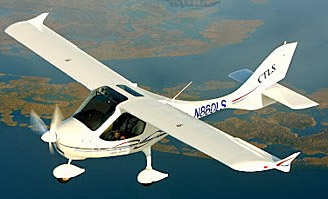
The CTLS. Photo courtesy Flight Design
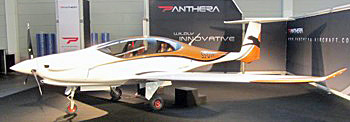
The streamlined Panthera from Pipistrel will offer three engine configurations: conventional piston; hybrid gas/electric; and all-electric! Photo: Jure Makovec/AFP

Matevz Lenarcic celebrates his triumph. Photo courtesy Pipistrel

In the midst of a couple weeks away from home to marry off my firstborn daughter, I remain nonetheless able and willing to mine the LSA infoverse for newsworthy veins. *** Also, check out Aero Friedrichshafen going on right now in Germany. It’s one of Europe’s premier aviation events, with lots of new aircraft (like the Pipistrel Panthera 4-seat flying Ferrari) and technologies announced every year. Now, two items of interest: *** Flight Design Goes EASA *** The leading SLSA producer for the U.S. market, Flight Design, told everyone at Aero that the CTLS has earned the European Aviation Safety Agency (EASA) restricted type certification ((R) TC) for the two-seater.John Doman, Flight Design’s director of business development of global sales and marketing, said, “For European flight schools the certification will enable additional aircraft utilization leading to more revenue and value for their purchase of a Flight Design (R) TC aircraft.” *** This type-certificated version of the CTLS will be distributed under the variant name CTLS-ELA and is nearly identical to the SLSA version already marketed worldwide.
Roadable Airplane, Meet Mainstream Media
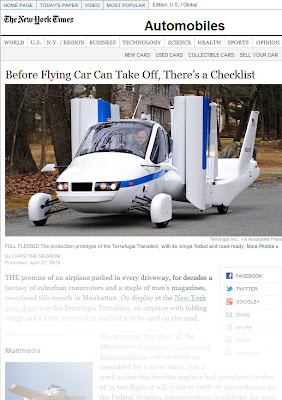
Screen capture from LA Times online

Photo courtesy L.A. Times

Photo courtesy Moller International

Somebody at the L.A. Times has got a sweet tooth for the flying car, specifically the Terrafugia Transition SLSA-legal “roadable” airplane. No less than six feature articles about flying cars have appeared in the prestigious newspaper’s online edition in the last month alone, in departments as diverse as Business, U.S., Nation Now, Tech Now and Automobiles, penned by a variety of journalists. *** All this attention also signifies somebody at Terrafugia is really doing a superb job at getting the word out, which has in fact been evident from the beginning: I’ve seen notices of hundreds of articles in all kinds of publications since the program was first announced some years ago.Clearly the idea of a Jetsons-style flying car continues to tickle the cultural subconscious. *** That the Transition is wildly unaffordable for most 99 percenters hardly matters: it’s kind of a kick, isn’t it, to imagine being able to fly your car anywhere, then drive around once you get there?
Three If By Sky: Prototype Makes First Flight
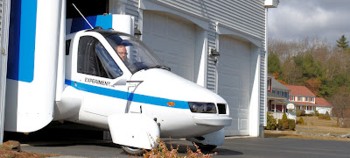
Peekaboo! Let's head for the airport. *** all images courtesy Terrafugia

Movin' on down the highway...

"Yes, ma'am, it's an airplane. Yes ma'am, it's a car too. Yes ma'am, *** I have a driver's license, a Sport Pilot's license, a TSA redress *** number and a note from my Mommy, now may I go flying please?

"Spread your wings and take the sky, *** Oh, your mammy's rich, and your daddy's good looking. *** So hush little baby, don't you cry."`

"Whee! Auto-piloting: Nothin' to it."

"I feel for those poor turkeys in gridlock down there...heh heh heh."

"Hey Frank, check out my new ride! No, you can't take it for a spin *** around the block. Sorry dude, that's just the way it is."

*** While at Sun ‘n Fun I heard the good news that the long-in-development Terrafugia Transition® Street-Legal Airplane (that’s it’s latest name) hit the road, then the skies on its first production prototype flight. *** You may remember there was a “Roadable” in the name at one time, but whatever the official moniker, everybody pretty much still calls it “that flying car.”Terrafugia forges on with the first flight announcement, happily picked up in media outlets from science mags to newspapers around the world, which took place March 23, 2012. *** How long until the $250,000-plus car-plane rolls off the production lines? Sometime within the next year is as close as the company is willing to predict, having been at it for a few years now. *** The flight reached 1400’ AGL and lasted eight minutes. Six flight test phases are planned before the craft, which is still targeted for ASTM certification as an S-LSA, is ready for prime time.By the way, if you’re in the Big Apple, you can see the production prototype up close and personal.
Sun ‘n Fun 2012: Day Five Part 3ree
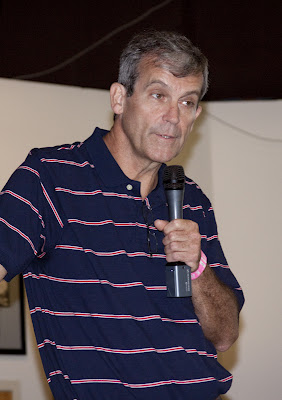
Dr. Richard McGlaughlin gave a stirring account of his BRS airframe 'chute save that delivered him and his daughter to safety after a catastrophic engine failure... over the water in the Bahamas.

Jeff Burnett of Flight Design helps a future pilot with the Gleim simulator which will soon be available for dealers and home use.

Jeppesen's lovely display booth at the show.

More eye candy from Jepp: they're doing cool things for the iPad.

Attendance was down this year. Yet exhibitors weren't complaining, as attendees came with checkbooks ready and several LSA dealers reported sales.

Derek Kuefler of BRS Aerospace and one model of the company's airframe parachute which has saved 276 aircraft and their occupants to date. Fascinating stat: Of the 30,000 BRS systems installed over 30 years, 1 in 125 has been deployed! That's across all kinds of aircraft and events... hard to argue that any aircraft wouldn't be safer with a 'chute on board

The only airplane to ever drop an atomic bomb: The amazing B-29.

Left to right, Jon Hansen, Peter Funk, and Craig, Gigi, and Jerrell C Bartow, the happy new owners of the first Lycoming-powered FK-12 Comet to be sold in America, hand over the check to Jon and "Doc" Bailey, right, head of Renegade Light Sport, which is doing the developmental and installation groundwork for the Lycoming IO-233 in is normally aspirated and fuel injected forms for many LSA makers, including Renegade's Falcon tricycle and taildragger composite S-LSA. Peter Funk is the highly creative designer of the Comet and FK series of light aircraft.
Sun ‘n Fun 2012: Day Four
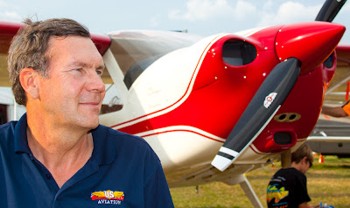


I caught up with a fellow hang glider pioneer from the 70s’, Scott Severen of U.S. Aviation, Denton, TX who filled me in on the latest events for his broad-based Light Sport/GA service and repair center. *** U.S. Aviation is a large, well-established aviation service center that does it all: flight training, aircraft and avionics sales, service and maintenance (for general aviation as well as LSA). *** Scott has been involved with Indus Aviation and its Thorpedo LSA aircraft for years. That project is moving to a China-based manufacturing base and “It’s a big process to pull it all together,” he says. He was just over there, assembling a couple Thorpedos to support the transition. *** “It will be a beautiful facility over there once it’s built. We’ll still do parts and aircraft sales in Dallas, and US Aviation will assist in factory support of the Thorpedo; it’s one of several LSA we do.
Sun ‘n Fun Day Three: Take Dieux
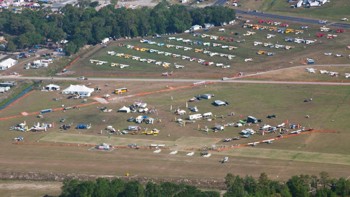


Here’s an aerial shot from my Courier flight of Paradise City, the Light Aircraft runway at the southeast end of the field that will soon be used year round. Many upgrades, including filling the dreaded ditches that used to run lengthwise. *** The attendance looks down from recent years but I haven’t put boots on that ground yet, time to head over there for a look. *** And below is a shot of the B-29 “FIFI” that crossed our nose on the Courier flight this morning. Not often you get a B-29 in your sights these days…not often at all, at any distance.
Sun ‘n Fun Day Two: Take Four
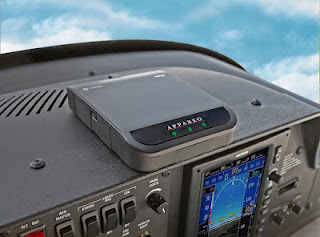


Bret Koebbe of Sporty’s Pilot Shop introduced me to a cool new ADS-B weather uplink product, the Stratus. *** US built by Appareo Systems, it’s a completely portable, wire-free, subscription-free weather solution that works in conjunction only (so far) with the Foreflight ap for the iPad. *** The Stratus provides ADS-B-based weather, Nexrad, Metars, TAS, Airmets, Sigmets, TFRS, “the whole nine yards of everything that’s included with ADS-B” as Bret describes it, all wirelessly transmitted to your in-cockpit iPad. *** It uses the iPad’s WiFi connection, and can be broadcast to more than one iPad in the cockpit. Just open Foreflight, link it to the Stratus box, and you’ve got all your weather info with you. *** The ADS-B weather coverage will be coast to coast-complete sometime in 2013. *** It’s a simple device: eight-hour battery, wire free, built-in ADS-B antenna buiilt into the box, and also includes WAAS GPS with 1-2 meter accuracy.
Sun ‘n Fun Day Two: Take Three
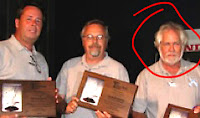
"Higs" (R), and partners in crime: Jeb Burnside, co-host and founder, and Jack Hodgson, producer and co-host/founder.

Ran into my old pal Dave “Higs” Higdon who’s been an aviation journalist/photo Iron Man for decades. We go back to the early ultralight days of 1981 I think, and Dave has hammered out a long and respected career producing quality insights and images for the aviation industry, willing to work harder than most of the rest of us. *** So here’s a plug for hisUncontrolled Airspace: News & conversation about the world of General Aviation flying website. *** Lots of entertaining jabber about all things aviation, including contributions from people like my old collaborating pal Jim Wynbrandt, who like Dave is an avid pilot and aviation journalist and widely respected in the industry. *** It’s an aviation-centric podcast, which presents itself this way: “Every week the UCAP gang gathers in the virtual hangar to talk about all things GA. You can listen-in as some of General Aviation’s most knowledgeable, opinionated, and plain-speaking characters, do some online hangar-flying.”
Sun ‘n Fun Day Two: Taildraggers R Us
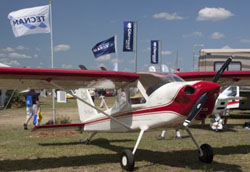




Tecnam North America is banking on what CEO Phil Solomon believes is a strong market interest in taildragger LSA. *** Tecnam is putting their R&D into attracting some of that market share with the revamped P92 tricycle gear S-LSA into a tail dragger version, and adding in some spice to boot: either a Lycoming YO-233-B2A or a Rotax 912/S2 powerplant is available to power it. *** The new version of the long-popular, well-proven P92 comes with a host of typical Tecnam quality features too, including a new wood-grain panel, adjustable seats, luggage compatrments, map and storage compartments on the door, epoxy corrosion proofing, lock/key entrance, tinted windows and lots more. *** Hydraulic toe brakes, electric flaps and lots more to join the electric trim and free castoring tail wheel. *** I’m hoping to fly it the week after the show, if some paperwork issues with the brand new plane get resolved.
Sun ‘n Fun 2012 Day One
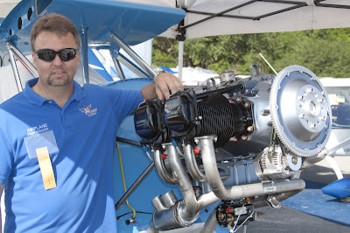
Jim Dehart and the FK12 Comet-mounted Lycoming IO-233 fully aerobatic engine - first in the U.S.

Christian Mundigler of Rotax BRP.

The 912 iS was wheeled in with great fanfare under a shroud to accompanying, powerful classical music of the Russian persuasion... all the world's a stage. It is a beautiful engine to be sure.

Dave Graham, right, shows off the magazine he created to show off Legend's fine Cub line. He credits Randy Schlitter of Rans Aircraft, who did the same for his line of SLSA and kits, with the idea. Both have done superb jobs, and it's fun to read about an airplane in so much detail. Great idea guys! That snazzy AmphibCub behind Dave belongs to the happy owner Frank (L).

Here's the scan code so you can get your own free copy with a smartphone and bar code reader.

Sun ‘n Fun got off to a great start with weather in the low 80’s, a helpful breeze and lots of new buildings and of course massive traffic jams coming in to the show because some things should never change no matter how many improvements are made. *** Seriously, the Sun ‘n Fun folks do a great job and there are many new things on the field to make life more enjoyable for spectators and those of us here to work.First up: Jim Dehart of Atlanta Light Sport Aviation was excited to show off his school’s new FK12 Comet with the first-in-US Lycoming IO-233 fully aerobatic light sport engine. *** “The airplane is really powerful,” Jim says, “and at 696 lbs. will be a real performer.” *** He quotes the horsepower at 125 hp but I’ve seen it at 116 max everywhere else so either I’ve got it wrong and there’s a bump in power from the inverted fuel/oil system on the aerobatic version (standard carburetted version also available, as well as a Rotax version, or he meant to say 116 hp.
Sun ‘n Fun (and Splash) This Week
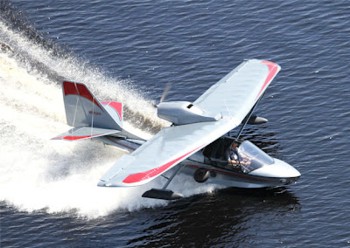
Searey LSX will be on prominent display at Sun 'n Fun starting Tuesday. photo courtesy Progressive Aerodyne

The Terrafugia Transition nears production and will be at the show. photo courtesy Terrafugia



The Searey from Kerry and Wayne Richter’s Progressive Aerodyne — guided by new principal, Adam Yang — just sent out word that the popular design celebrates its 20th anniversary this year by “making a big splash at Sun N Fun!”The Searey, perhaps the most successful kit amphibian ever (and which is still on the trail of certifying its latest LSX model to the LSA ASTM standard — they thought they’d have it done by end of 2011) will be at the show in demonstrable abundance. *** Five will be on exhibit from the nearby factory, and a “very large ‘Gaggle’ of Seareys” is expected to arrive en masse on Thursday, March 29th at 10:00 a.m. — 20 or more from the cohesive and enthusiastic Searey community of more than 500. *** Half an hour later a smaller group will overfly the Sun ‘n Fun crowd. *** The Searey will be on display at three locations: Booth 58, the LSA Mall and the Seaplane Pilots Association display.
Pushing the Envelope
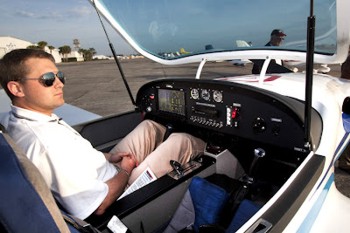
With Americans "on the grow", how much room should LSA have?

Renegade's Falcon sports a 46" wide cabin — "six inches wider than a Cessna 172" say the ads — but ever-larger people beg the question: what will be considered "tiny" 20 years from now? And do designers need to factor those trends into their designs...yet still feel the pinch of weight-restricted airframes?

Barry Pruitt is a good sized guy and he's showing plenty headroom *** in the new Bristell Fastback, one of the more "commodious" LSA.

Could four-seat, ASTM-certified aircraft *** like this Piper Archer LX be in our future?

Supersonic flight pioneer and WWII ace Chuck Yeager is famous for using, if not coining, the term “pushing the envelope,” which has entered the popular lexicon for just about anything to do with growth and meeting challenges. *** In that vein, since the day the Light Sport category became a fixture of the aviation regulatory landscape, there have been calls to do everything from abolish it outright to expand it’s current parameter. The parameters invoked to arrive at the perfect light aircraft involve the Usual Suspects: faster, bigger, stronger, heavier, better load, no altitude restrictions etcetera etcetera etcetera. *** In that vein, I want to share with you some cogent email comments received from Plane & Pilot magazine reader Dr. Barry Gloger who puts forward a well-reasoned argument for reworking the LSA concept. *** Whether you agree or not with his point of view, it’s hard to refute his logic, since it’s based on his expertise in the actual physical size of the “average American.” *** And now for The Usual Disclaimer: his viewpoint does not necessarily reflect my opinion or that of the staff of P&P mag.
Skycatcher Crash #2
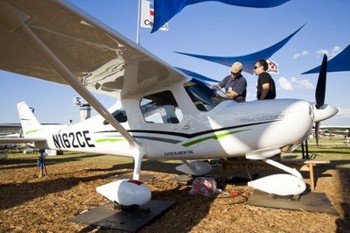

No details yet from Cessna on the crash of its second Skycatcher (AKA Cessna 162). According to numerous online reports, the SLSA production prototype crashed March 19 while on a flight test near Wichita, Kan. *** A Kansas cable tv news channel posted a story online that claimed the plane landed under a BRS ballistic airframe parachute canopy, hit a fence and flipped over. *** Good news: the pilot was not injured. *** That’s about all the good news though for Cessna, which had reworked the vertical stabilizer and rudder after its first prototype crashed in a stall-spin accident last fall. *** According to Cessna personnel, the company had conducted further wind tunnel tests after the first crash, then picked one of two aerodynamic solutions which led to the tail mod. *** A Cessna spokesman also commented on a recent online video that Cessna had begun production on the Skycatcher at the Shenyang Aircraft Corporation, China plant.
SAFE!
(Another Persective)
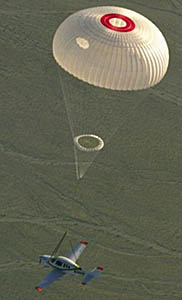
BRS test of the SR20 canopy from the late 1990s.

Step-by-step view of a BRS rocket-deployed parachute deployment from the Cirrus SR20.

The circular ring in front of the main canopy is called the slider. Seen doing its job in the four-view photo (frames 2 & 3), the slider controls the opening speed of the main canopy.

Watch the video. Open your mind. Put yourself in this cockpit. Imagine it happening to you. Think of the people you love and who love you. *** Dan Johnson wrote about this yesterday in his blog post (my writing home away from home) with some tasty comments based on his years at BRS parachutes, so I’ll direct you there for his in-depth overview. *** My purpose in posting here is more personal. I want you to fly safely your entire, long life. *** But any pilot — and you know who you are — who has so far convinced him/herself that an airframe parachute shouldn’t be an essential component of any aircraft, please watch the video. *** Then try to make a rational argument afterwards against recreational aircraft carrying onboard chutes. *** Yes, the pilot is engaging in high-stress aerobatics, which the vast majority of us will never do.
New Fuel-Injected Rotax 912 iS!


The new Flight Design CTLSi fitted with the 912 iS


Rotax Aircraft Engines just raised the bar with its new Rotax 912 iS, fuel-injected, 100-hp engine, based on the truly ubiquitous core 912 mill we all know so well. *** FYI: Did you know more than 170,000 Rotax aircraft units are in service worldwide? Wow! That’s a lot of engines. *** The new powerplant is being hailed as the most fuel efficient aviation engine for light sport aircraft. *** Alas, the 912 iS won’t download your email, doesn’t have a Retina display and has nothing in fact to do with Apple. Watch the video below for more details on the new engine’s operation. *** The “i” of course stands for fuel injected, and with this happy development come beaucoup bennies: • Up to 30% lower fuel consumption than previous versions, and up to 78% lower than “comparable competitive engines”. Could this lead to smaller fuel tanks in LSA? That would easily make up for the 13 pound increase in engine weight and then some without giving up range.
Lessons From The Field, Part Deux
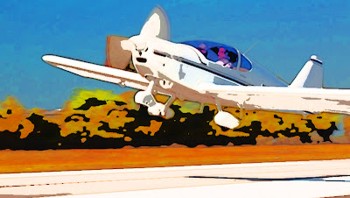
LSA like this Alto 100 can surprise GA pilots *** with robust takeoff performance.

Many GA pilots have never flown an aircraft with a stick

Many GA aircraft like this Cessna 170 *** use a yoke for pitch and roll

Spicy LSA: the FK 12 Comet comes with Rotax or Lycoming 233-LSA engines for sport flying or acrobatics.

Full EFIS cockpits are standard for many LSA cockpits

Time to wrap up this week’s discussion with John Lampson, CFII and veteran Flight Design CTLS instructor. *** Our topic: How and why are LSA different than GA airplanes and what transition challenges do they present for experienced GA pilots?”LSA really perform,” says John. “When you add power in the CT, it wants to just leap off the ground. That’s not true of most heavier GA airplanes.” *** “As I said earlier, GA experience shouldn’t hold pilots back in an LSA. But I’ve noticed they’re often surprised at the lighter, more dramatic, responsive feel of LSA, especially when they make the exact same control inputs that they’re used to for a GA airplane.” *** “New pilots on the other hand, with no prior flying experience, have no preconceptions. I can teach them from the ground up. They don’t have to combat and unlearn those old habits first.” *** Does that mean baby blue students get with the program quicker?
Lessons From The Field
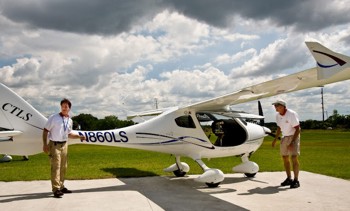
John Lampson, left, CFII and busy LSA instructor, and the Flight Design CTLS he's taught more than 1,000 hours on.

Some LSA like the Breezer feel very much like a "Wichita Tin" GA airplane.

...while some, like the former PiperSport, can have very sensitive pitch and/or roll forces.

And then there are the LSA Cubs like this beauty from Legend, which handle like, well, Cubs.

My good pal John Lampson, the 6,000 hour CFII who took me through my Sport Pilot training a few years back now, continues the good fight to put well-trained, safe Light Sport Aircraft pilots in the air.John’s a CFII, so he teaches for all the GA ratings, but he’s getting a lot of students putting in LSA time on the Flight Design CTLS that’s on leaseback out of Premier Flight Center in Hartford, CT. *** John’s done well over 1,000 hours of training by now in the CT so I thought he’d be a great source of regular tips on learning to fly, or transition to, light sport flight. We got to chatting on which topic to kick off this training discussion with and before long settled on something we’d covered before and that I’ve written about in the past: how is flying an LSA different, especially for rated GA pilots used to heavier, less responsive aircraft, and what challenges does that present to the student?


